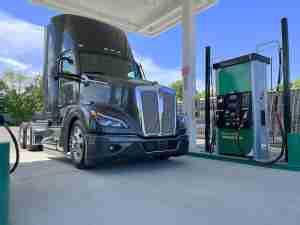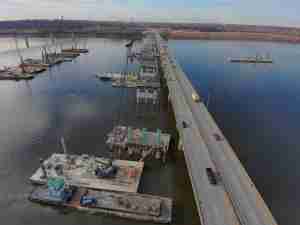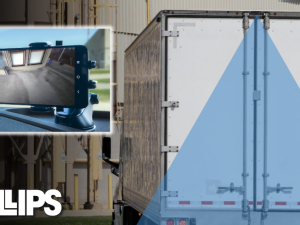As dawn breaks over the coastal town of Lofoten, Norway, a large truck makes its way through the winding fjord roads. Inside the truck, thousands of fresh salmon, just hours away from their watery home, are on a race against time, journeying to distant markets and dinner tables across the world. Welcome to the world of salmon road transportation - a fascinating interplay of commerce, technology, and logistics.
A Growing High Value Market
As global trade routes expanded and the world became more interconnected, so did the demand for fresh salmon in landlocked regions and distant territories. The flexibility and speed offered by road transportation became indispensable, especially for places not immediately accessible by rail or sea.
With the latest refrigerated trucks and improved road infrastructure, transporting salmon by road became not just feasible but also highly efficient, bridging the gap between remote fishing villages and bustling urban centres all across the Europe.
But with great value comes great responsibility. Salmon's natural oils and fats, while nutritionally beneficial, also make it highly perishable. Exposure to warmer temperatures can rapidly degrade its quality. Hence, there is an imperative need for swift, efficient transportation. Every hour counts, and road transportation, with its ability to navigate directly from source to destination, is indispensable.
.jpg)
The Challenges of Salmon Road Transportation
Temperature plays the lead role in preserving the freshness of salmon. To prevent spoilage and bacterial growth, salmon must be stored between 0°C and 4°C during transport. Even minor fluctuations can impact its shelf-life and quality, making advanced refrigeration systems crucial. These systems must not only maintain the right temperature but also ensure cooling throughout the storage space.
But even with the best refrigerator trailers it is crucial to deliver salmon on time. A delay of even a few hours can affect the freshness and, consequently, the market value of the product. Efficient routing, reliable vehicles, flexibility, and contingency planning for unforeseen delays are imperative to ensure the salmon reaches its destination within the stipulated time.
Often, the best salmon fisheries are located in remote areas, known more for their natural beauty than well-maintained roads. Navigating these challenging terrains, especially in weather extremes, can be a logistical nightmare. The professionalism of drivers as well as the excellent state of the vehicles are crucial here to deliver on time and within best quality. Today, the accepted standard in this sector is the latest 3-axle trucks with state of art refrigerator semi-trailers.
"In the salmon production, where day-to-day and seasonal variations present significant logistical challenges, the role of adept logistics providers becomes pivotal. Companies like Girteka are stepping up, leveraging their fleet size to offer flexibility, vital in catering to demands in the salmon market. Also, facilitating quick and responsive communication is vital for the future development of the business, a process that can be significantly supported by digital solutions." – summarizes Eirik Flo, Logistics Director at „Coast Seafood“.
Solutions for Salmon Road Transportation Excellence
As seasonality dictates the patterns of road transportation of salmon, it is important to understand the demand and its peaks, as well as adapt to the situation with flexible capacity solutions. But capacity is not the only answer for both producers and customers/retail shops.
The digital solutions that are available today, can support all stakeholders. Real-time visibility (RTV) allows all sides to monitor the cargo, its status, and adapt their operations accordingly. Advanced temperature monitoring systems provide real-time data, ensuring optimal conditions are maintained. Plus, innovations in refrigeration technology are making transport vehicles more efficient and reliable.
Additionally, companies that use Artificial Intelligence (AI) tools to plan routes, are at the forefront of meeting all expectations from producer and purchaser, avoiding mistakes and adapting to possible changes along the delivery.
Meeting the Needs of the Sector
The salmon transportation sector requires logistics partners that understand its nuances. From ensuring the right temperature to navigating regulatory hurdles, service providers need to offer end-to-end solutions tailored for salmon deliveries. Therefore, one of the key elements taken into consideration today is long term collaboration.
The latest digital solutions and newest trucks are still not enough to deliver on customers promises. The essential person remains the driver. Driving a salmon transport vehicle is not the same as driving a regular freight truck. Drivers and transport managers need specialized training, from understanding specialities of salmon shelf-life to nuances of driving in rough terrain and winter conditions.
The Future of Salmon Road Transportation
The old way of salmon transportation by road might soon undergo transformational shifts, shaped by evolving trends. Current indications suggest an upward trajectory in salmon exports. According to FAO, per capita consumption is expected to increase by 4% in the period 2021-2031. As more cultures incorporate salmon into their diet and recognize its nutritional benefits, demand is bound to intensify. Coupled with this is the technological revolution in transportation, where AI-driven route optimization, advanced refrigeration technologies, and even autonomous driving may become the norm.
However, the shadow of environmental concerns looms large. As the effects of climate change become more pronounced, sustainable transportation will no longer be a choice but a necessity. We might witness a surge in electric or hybrid salmon transport vehicles, and there might be stringent regulations governing carbon emissions.
For road transportation services, this evolution could translate to a mixed set of challenges and opportunities. While transport providers would need to invest in upgrading their fleets and training their personnel to meet the new norms, they would also be catering to an ever-expanding market, given the rising popularity of salmon.
Salmon road transportation, though replete with challenges, stands as an example of how proper, efficient road transportation influences the development of the whole sector. The drive comes from visionaries who seized the opportunity and the tireless teams ensuring that each journey is a success. Today, the world of salmon transportation is at a pivotal juncture, shaped by rising demand, new trends, seasonality, and the flexibility of road transport companies to adapt to the changing nature and pressing environmental concerns.









